| Libu in hieroglyphs | |||||||
|---|---|---|---|---|---|---|---|
rbw | |||||||

The Libu (Ancient Egyptian : rbw; also transcribed Rebu, Lebu, Lbou, Libou) were an Ancient Libyan tribe of Berber origin, from which the name Libya derives. [1]
| Libu in hieroglyphs | |||||||
|---|---|---|---|---|---|---|---|
rbw | |||||||

The Libu (Ancient Egyptian : rbw; also transcribed Rebu, Lebu, Lbou, Libou) were an Ancient Libyan tribe of Berber origin, from which the name Libya derives. [1]
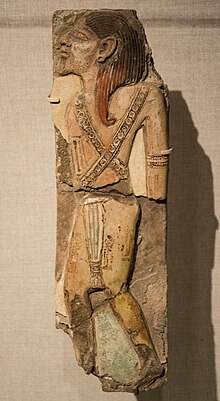
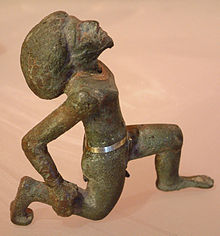
Their tribal origin in Ancient Libya is first attested in Egyptian language texts from the New Kingdom, especially from the Ramesside Period. The earliest occurrence is in a Ramesses II inscription. [2] There were no vowels in the Egyptian script. The name Libu is written as rbw in Egyptian hieroglyphs. In the Great Karnak Inscription Merneptah describes the Libu as men with pale complexion tattooed and with dark hair and eyes (Propably of ibero-maurusian culture)
Hostilities between Egypt and Libya broke out in regnal year 5 (1208 BCE) and how a coalition of Libu and Sea Peoples led by the chief of the Libu Meryey was defeated. [3] [4] Libu appears as an ethnic name on the Merneptah Stele , also known as the Israel Stele. [5]
Ramesses III defeated the Libyans in the 5th year of his reign, but six years later the Libyans joined the Meshwesh and invaded the western Delta and were defeated again. [6]
This name Libu was taken over by the Greeks of Cyrenaica, who co-existed with them. [7] Geographically, the name of this tribe was adopted by the Greeks for "Cyrenaica" as well as for northwestern Africa in general. [8]
In the neo-Punic inscriptions, Libu was written as Lby for the masculine noun, and Lbt for the feminine noun of Libyan. The name supposedly was used as an ethnic name in those inscriptions. [9]
In the Western Nile Delta, some time during the 22nd Dynasty of Egypt flourished a realm of the Libu led by "Great Chiefs of the Libu". [10] Those rulers soon formed a dynasty, and they often had local "Chiefs of the Ma(shuash)" as their subordinates. The dynasty culminated with the chiefdom of Tefnakht who, despite holding both the titles of "Great Chief of the Libu" and of "Chief of the Ma" at Sais, was more probably of Egyptian ethnicity rather than either Libu or Ma. [11] Later, Tefnakht claimed for himself even the pharaonic titles, founding the 24th Dynasty. [12]
Here follows the succession of the known "Great Chiefs of the Libu". They used to date their monuments following the regnal years of the contemporary pharaoh of the 22nd Dynasty. [13]
| Name | Image | Attested in regnal year... | Corresponding absolute datation | Notes |
|---|---|---|---|---|
| Inamunnifnebu | 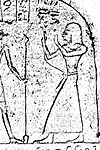 | Year 31 of Shoshenq III [13] | 795 BCE | - |
| Niumateped |  | Year 4 of Shoshenq IV Year 8 of Shoshenq IV Year 10 of Shoshenq IV [14] | - BCE | Possibly two different rulers with the same name |
| Tjerpahati |  | Year 7 of Shoshenq V Year 15 of Shoshenq V [14] | 760 BCE 753 BCE | Also known in literature as Tjerper or Titaru, son of Didi |
| Ker | 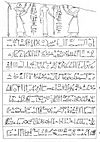 | Year 19 of Shoshenq V [13] | 749 BCE | - |
| Rudamun | Year 30 of Shoshenq V [13] | 738 BCE | - | |
| Ankhhor | Year 37 of Shoshenq V Year ? of Shoshenq V [13] | 731 BCE ? BCE | Struggled against Tefnakht and was likely defeated by him | |
| Tefnakht |  | Year 36 of Shoshenq V Year 38 of Shoshenq V [13] | 732 BCE 730 BCE | - |

Usermaatre Meryamun Ramesses III was the second Pharaoh of the Twentieth Dynasty in Ancient Egypt. Some scholars date his reign from 26 March 1186 to 15 April 1155 BC, and he considered to be the last great king of the New Kingdom.
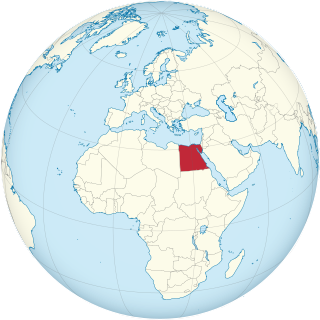
Articles related to Egypt include:

The Sea Peoples are a hypothesized seafaring confederation that attacked ancient Egypt and other regions in the East Mediterranean before and during the Late Bronze Age collapse. Following the creation of the concept in the 19th century, the Sea Peoples' incursions became one of the most famous chapters of Egyptian history, given its connection with, in the words of Wilhelm Max Müller, "the most important questions of ethnography and the primitive history of classic nations".
The history of ancient Egypt spans the period from the early prehistoric settlements of the northern Nile valley to the Roman conquest of Egypt in 30 BC. The pharaonic period, the period in which Egypt was ruled by a pharaoh, is dated from the 32nd century BC, when Upper and Lower Egypt were unified, until the country fell under Macedonian rule in 332 BC.

Khepermaatre Ramesses X was the ninth pharaoh of the 20th Dynasty of Ancient Egypt. His birth name was Amonhirkhepeshef. His prenomen or throne name, Khepermaatre, means "The Justice of Re Abides."

Merneptah or Merenptah was the fourth pharaoh of the Nineteenth Dynasty of Ancient Egypt. He ruled Egypt for almost ten years, from late July or early August 1213 BC until his death on 2 May 1203 BC, according to contemporary historical records. He was the first royal-born pharaoh since Tutankhamun of the Eighteenth Dynasty.
The Meshwesh was an ancient Libyan tribe, along with other groups like Libu and Tehenu/Tjemehu.

Shepsesre Tefnakht was a prince of Sais and founder of the relatively short Twenty-fourth Dynasty of Egypt; he rose to become a Chief of the Ma in his home city. He is thought to have reigned roughly 732 BCE to 725 BCE, or seven years. Tefnakht I first began his career as the "Great Chief of the West" and Prince of Sais and was a late contemporary of the last ruler of the 22nd Dynasty: Shoshenq V. Tefnakht I was actually the second ruler of Sais; he was preceded by Osorkon C, who is attested by several documents mentioning him as this city's Chief of the Ma and Army Leader, according to Kenneth Kitchen, while his predecessor as Great Chief of the West was a man named Ankhhor. A recently discovered statue, dedicated by Tefnakht I to Amun-Re, reveals important details about his personal origins. The statue's text states that Tefnakht was the son of a certain Gemnefsutkapu and the grandson of Basa, a priest of Amun near Sais. Consequently, Tefnakht was not actually descended from either lines of Chiefs of the Ma and of the Libu as traditionally believed but rather came from a family of priests, and his ancestors being more likely Egyptians rather than Libyans.

Aakheperre Setepenre Osorkon the Elder was the fifth king of the 21st Dynasty of Ancient Egypt and was the first Pharaoh of Meshwesh origin. He is also sometimes known as Osochor, following Manetho's Aegyptiaca.

During the Iron Age and classical antiquity, Libya referred to modern-day Africa west of the Nile river. Greek and Roman geographers placed the dividing line between Libya/Africa and Asia at the Nile.

The Great Karnak Inscription is an ancient Egyptian hieroglyphic inscription belonging to the 19th Dynasty Pharaoh Merneptah. A long epigraph, it was discovered at Karnak in 1828–1829. According to Wilhelm Max Müller, it is "one of the famous standard texts of Egyptology... [and has been] ... one of the greatest desiderata of scholars for many years."
Amun was a major ancient Egyptian deity who appears as a member of the Hermopolitan Ogdoad. Amun was attested from the Old Kingdom together with his wife Amunet. With the 11th Dynasty, Amun rose to the position of patron deity of Thebes by replacing Montu.
Meryey was a Berber king of ancient Libya, during the late 13th century BC. He was the son of Ded. His reign was contemporary with pharaoh Merneptah of Egypt. He is mentioned as the architect of a major military alliance amongst his nation, the Meshwesh, Lukka, and the Sea Peoples known as the Ekwesh, Teresh, Shekelesh, and the Sherden. This confederacy went to war against Merneptah in the western delta during the 5th and 6th years of his reign.

The Nineteenth Dynasty of Egypt, also known as the Ramessid dynasty, is classified as the second Dynasty of the Ancient Egyptian New Kingdom period, lasting from 1292 BC to 1189 BC. The 19th Dynasty and the 20th Dynasty furthermore together constitute an era known as the Ramesside period. This Dynasty was founded by Vizier Ramesses I, whom Pharaoh Horemheb chose as his successor to the throne.

The Twentieth Dynasty of Egypt is the third and last dynasty of the Ancient Egyptian New Kingdom period, lasting from 1189 BC to 1077 BC. The 19th and 20th Dynasties together constitute an era known as the Ramesside period. This dynasty is generally considered to mark the beginning of the decline of Ancient Egypt at the transition from the Late Bronze to Iron Age. During the period of the Twentieth Dynasty, Ancient Egypt faced the crisis of invasions by Sea Peoples. The dynasty successfully defended Egypt, while sustaining heavy damage.

The Twenty-fourth Dynasty of Egypt is usually classified as the fourth Dynasty of the Ancient Egyptian Third Intermediate Period.

The Merneptah Stele, also known as the Israel Stele or the Victory Stele of Merneptah, is an inscription by Merneptah, a pharaoh in ancient Egypt who reigned from 1213 to 1203 BCE. Discovered by Flinders Petrie at Thebes in 1896, it is now housed at the Egyptian Museum in Cairo.
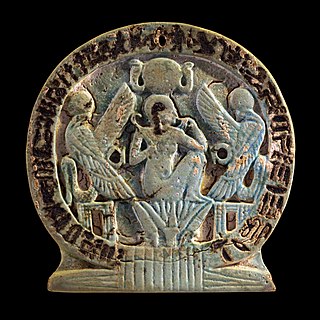
Osorkon C was a Great Chief of the Ma and a governor of Sais in Lower Egypt, during the 22nd Dynasty.
Ankhhor or Ankh-Hor was an ancient Egyptian “Great Chief of the Libu” during the late 22nd Dynasty.
The Battle of Perire was fought around 1208 BC between the New Kingdom of Egypt, led by the pharaoh Merneptah, and a coalition of Libyan tribes and Sea Peoples. The Egyptians won a decisive victory. This was the first of many encounters between Egypt and the Sea Peoples. Our main source of information about this battle comes from the Great Karnak Inscription.
The seventy-nine line inscription is located on the interior of the east wall of the "Cours De la Cachette," directly north of a copy of the Hittite treaty from the reign of Ramesses II and in conjunction with other reliefs of Merneptah (PM II, p. 131 [486])... Unfortunately, the excavation of the Cours De la Cachette between 1978-1981 by the French expedition at Karnak did not discover any new blocks belonging to the Great Karnak Inscription of Merneptah, although it did demonstrate that the court was filled with many ritual and religious scenes in addition to its known military themes (F. LeSaout, "Reconstitution des murs de la Cours De la Cachette," Cahiers De Karrah VII (1978-1981) [Paris, 1982], p. 214).